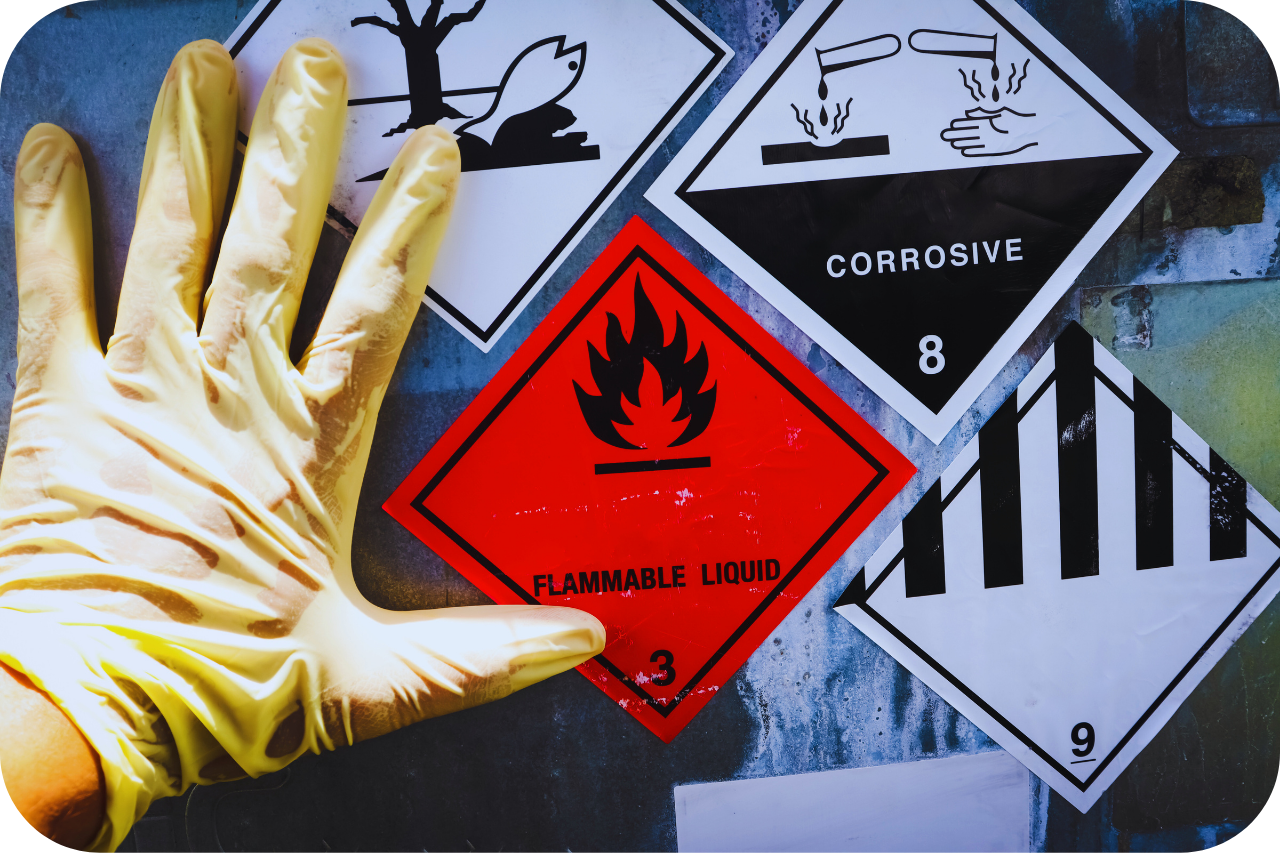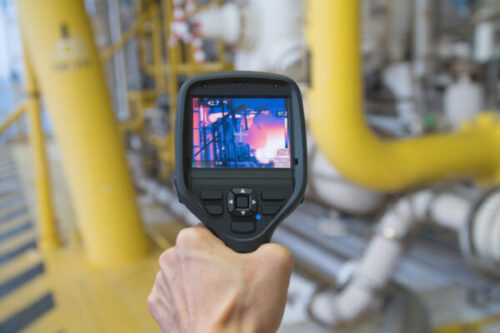4 Simple Techniques For Roar Solutions
4 Simple Techniques For Roar Solutions
Blog Article
Roar Solutions Fundamentals Explained
Table of ContentsRoar Solutions - QuestionsRoar Solutions - TruthsRoar Solutions Fundamentals Explained
In such an environment a fire or explosion is possible when 3 basic conditions are fulfilled. This is typically described as the "hazardous area" or "combustion" triangular. In order to shield setups from a possible surge a technique of evaluating and classifying a possibly harmful location is called for. The objective of this is to ensure the appropriate selection and installation of tools to ultimately avoid a surge and to ensure safety and security of life.
(https://www.video-bookmark.com/bookmark/6634779/roar-solutions/)
No tools needs to be set up where the surface area temperature of the tools is higher than the ignition temperature of the provided threat. Below are some usual dirt unsafe and their minimal ignition temperature level. Coal Dirt 380C 225C Polythene 420C (melts) Methyl Cellulose 420C 320C Starch 460C 435C Flour 490C 340C Sugar 490C 460C Grain Dirt 510C 300C Phenolic Material 530C > 450C Aluminium 590C > 450C PVC 700C > 450C Residue 810C 570C The likelihood of the hazard being present in a concentration high enough to create an ignition will certainly differ from place to place.
In order to categorize this risk an installation is divided right into locations of danger depending upon the amount of time the hazardous is existing. These locations are referred to as Zones. For gases and vapours and dirts and fibers there are three zones. Area 0 Zone 20 A harmful atmosphere is extremely likely to be existing and might be present for extended periods of time (> 1000 hours annually) or even constantly Zone 1 Area 21 A harmful environment is possible yet unlikely to be present for extended periods of time (> 10 450 C [842 F] A classification of T6 implies the minimal ignition temperature level is > 85 C [185 F] Dangerous location electric equipment possibly developed for usage in greater ambient temperatures. This would certainly suggested on the rating plate e.g. EExe II C T3 Ta + 60C( This suggests at 60C ambient T3 will not be gone beyond) T1 T1, T2, T3, T4, T5, T6 T2 T2, T3, T4, T5, T6 T3 T3, T4, T5, T6 T4 T4, T5, T6 T5 T5, T6 T6 T6 A T Class rating of T1 indicates the maximum surface area temperature created by the instrument at 40 C is 450 C. Thinking the connected T Course and Temperature level rating for the tools are ideal for the location, you can always make use of an instrument with an extra rigid Department score than needed for the location. There isn't a clear response to this inquiry unfortunately. It truly does rely on the type of tools and what repair work require to be executed. Equipment with details test treatments that can not be carried out in the area in order to achieve/maintain 3rd party ranking. Must come back to the manufacturing facility if it is before the devices's solution. Area Repair By Authorised Worker: Complicated testing may not be called for however certain treatments may need to be complied with in order for the equipment to preserve its 3rd party rating. Authorised personnel need to be employed to perform the job appropriately Fixing must be a like for like substitute. New element need to be taken into consideration as a direct replacement requiring no special testing of the tools after the repair work is total. Each item of equipment with an unsafe ranking should be examined individually. These are outlined at a high level below, but also for more in-depth details, please refer straight to the standards.
Some Known Details About Roar Solutions
The tools register is a thorough database of tools records that includes a minimum set of areas to determine each item's area, technological specifications, Ex classification, age, and ecological data. This details is crucial for monitoring and managing the devices effectively within unsafe areas. On the other hand, for routine or RBI tasting evaluations, the quality will certainly be a combination of Thorough and Close evaluations. The ratio of Thorough to Close assessments will be determined by the Equipment Risk, which is analyzed based upon ignition danger (the likelihood of a resource of ignition versus the possibility of a combustible atmosphere )and the harmful area category
( Zone 0, 1, or 2). This variant will also influence the resourcing needs for job preparation. When Whole lots are defined, you can establish tasting plans based on the example size of each Whole lot, which describes the number of arbitrary equipment items to be evaluated. To figure out the needed example dimension, two facets need to be reviewed: the dimension of the Whole lot and the category of examination, which indicates the degree of effort that must be used( minimized, regular, or raised )to the inspection of the Lot. By integrating the classification of inspection with the Great deal size, you can then develop the appropriate rejection criteria for an example, suggesting the allowed variety of defective products discovered within that sample. For even more information on this procedure, please refer to the Energy Institute Guidelines. The IEC 60079 basic suggests that the optimum period in between inspections ought to not go beyond 3 years. EEHA examinations will certainly likewise be conducted outside of RBI projects as component of scheduled maintenance and tools overhauls or repairs. These inspections can be attributed towards the RBI sample sizes within the impacted Lots. EEHA inspections are performed to determine faults in electric devices. A weighted racking up system is necessary, as a solitary tool might have several faults, each with differing degrees of ignition danger. If the mixed score of both examinations is less than twice the fault rating, the Lot is regarded acceptable. If the Whole lot is still thought about inappropriate, it needs to undergo a complete assessment or justification, which may trigger stricter examination procedures. Accepted Whole lot: The sources of any kind of faults are determined. If an usual failure setting is found, extra tools might need maintenance. Faults are identified check my source by severity( Security, Honesty, House cleaning ), guaranteeing that immediate problems are assessed and resolved without delay to mitigate any influence on safety or procedures. The EEHA data source ought to track and videotape the lifecycle of faults together with the restorative activities taken. Implementing a robust Risk-Based Assessment( RBI )approach is essential for making certain compliance and safety in handling Electric Tools in Hazardous Locations( EEHA) (eeha). Automated Mistake Rating and Lifecycle Monitoring: Easily manage faults and track their lifecycle to enhance inspection precision. The introduction of this assistance for risk-based assessment additionally reinforces Inspectivity's placement as a best-in-class service for governing compliance, in addition to for any type of asset-centric assessment use situation. If you have an interest in discovering much more, we invite you to request a demo and uncover exactly how our option can transform your EEHA management procedures.
The Buzz on Roar Solutions

In regards to explosive threat, a hazardous location is an atmosphere in which an explosive ambience exists (or might be expected to be existing) in quantities that require unique safety measures for the building, setup and usage of equipment. Roar Solutions. In this write-up we check out the challenges dealt with in the workplace, the danger control procedures, and the required proficiencies to work securely
These substances can, in certain conditions, form explosive ambiences and these can have significant and unfortunate repercussions. Most of us are acquainted with the fire triangle get rid of any type of one of the three elements and the fire can not occur, but what does this mean in the context of dangerous areas?
In most instances, we can do little about the levels of oxygen airborne, however we can have significant influence on sources of ignition, for example electric equipment. Hazardous areas are documented on the harmful location classification illustration and are identified on-site by the triangular "EX" indication. Here, amongst various other essential info, areas are divided into 3 types relying on the threat, the possibility and period that an eruptive ambience will exist; Area 0 or 20 is regarded the most dangerous and Zone 2 or 22 is deemed the least.
Report this page